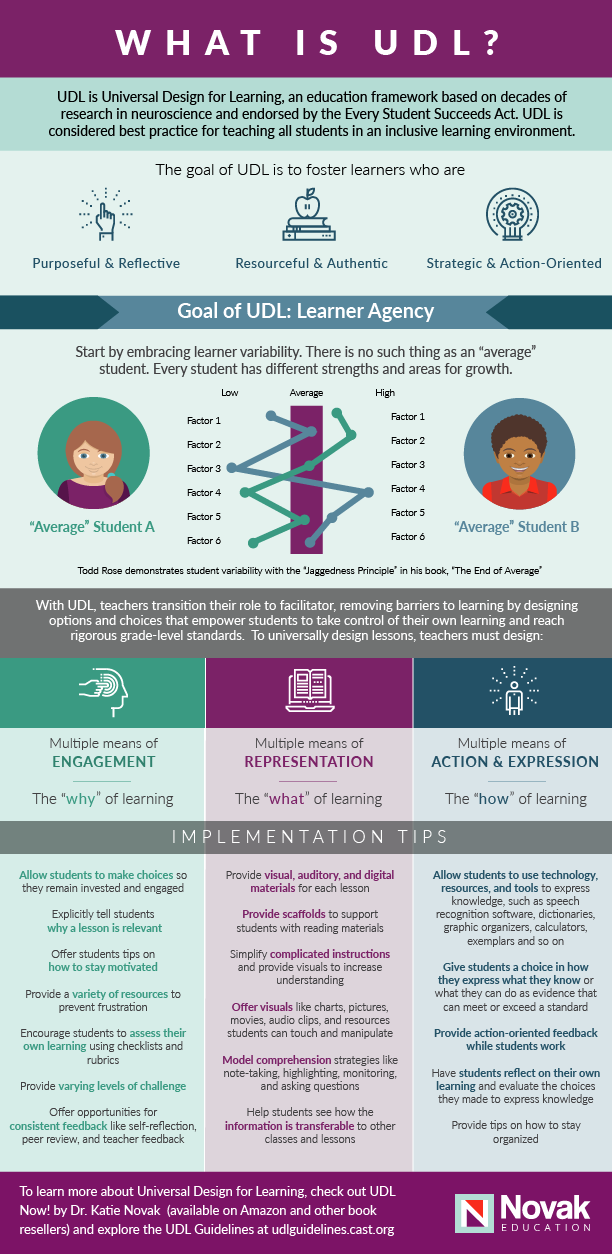Too many educators feel that their autonomy has been taken away by standards, scripted curriculum, and ultimately, standardized testing. It doesn’t have to be this way. We need our systems designed to meet the needs of our students, not a test, and give our teachers back the independence to proactively design lessons that engage and support all students.
When we teach students to become expert learners who are purposeful and motivated, resourceful and knowledgable, and strategic and goal-directed – the goals of Universal Design for Learning (UDL) – improved test results will come. Rigorous state-standards will be met. Students will be engaged, self-regulated, and more successful. Teachers will be more engaged and effective. Everyone wins.
UDL is an educational framework based on decades of neuroscience research and is endorsed by the Every Student Succeeds Act (ESSA). This framework is being adopted by teachers, schools, and districts around the globe and is considered best practice for teaching ALL students in an inclusive learning environment. UDL empowers both teachers and students by putting students in charge of their own learning.
Yet, there continues to be many misunderstandings about what UDL is and is not. I’ve put together this infographic to help spread the word about UDL and provide some practical tips for implementing UDL. I’ll be the first to say that UDL can’t be learned by just looking at an infographic, but with your help, we can spread the word about this education framework that has the ability to shape the future success of all of our students.
What is UDL?
UDL is Universal Design for Learning, an education framework based on decades of research in neuroscience and endorsed by the Every Student Succeeds Act. UDL is considered best practice for teaching all students in an inclusive learning environment.
The goal of UDL is to create learners who are purposeful & motivated, resourceful & knowledgable, and strategic & goal oriented, in other words, expert learners.
Start by embracing learner variability. There is no such thing as an “average” student. Every student has different strengths and weaknesses.
With UDL, teachers transition their role to facilitator, removing barriers to learning by giving students options and choices that empower them to take control of their own learning and reach rigorous state-standards. To universally design lessons, teachers must provide multiple means of engagement, multiple means of representation, and multiple means of action and expression.
Are you ready to start learning more about UDL and integrating it into your daily practice? Enroll in one of our online courses. 
Not sure where to start?
- Best for educators that are new to UDL? UDL Now!
- Best for those looking to implement SEL and UDL to reach and teach the whole child? How SEL and UDL Intersect
- Best for those looking to create equitable learning environments for all students? Equity by Design
- Looking for peer and instructor driven feedback? Explore our facilitated courses
- Looking to drive the pace of your learning? Explore our self-directed courses
Editor's Note: This blog has been updated from its previous version first published in Dec. 2018.




